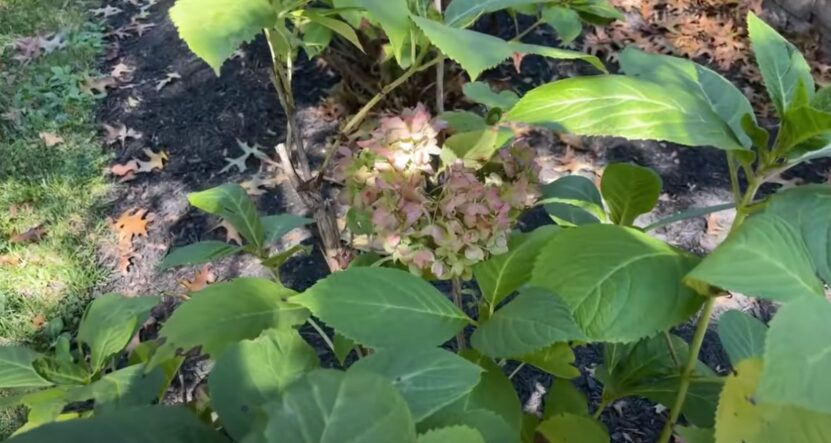Little Known Facts About Hydrangea Leaves Turning Yellow.
The Main Principles Of Hydrangea Leaves Turning Yellow
Table of Contents10 Easy Facts About Hydrangea Leaves Turning Yellow DescribedMore About Hydrangea Leaves Turning YellowWhat Does Hydrangea Leaves Turning Yellow Mean?The Ultimate Guide To Hydrangea Leaves Turning Yellow
Hydrangea plants are known for their gorgeous blooms, yet often their leaves can transform yellow. This is typically an indicator that something is wrong and the plant needs your assistance.Hydrangea leaves turning yellow can be a cause for concern. There are numerous reasons that Hydrangea leaves turn yellow, and a lot of them are simple to fix. Let's look at one of the most common reasons that Hydrangea leaves turn yellow and just how to fix them. Hydrangea leaves generally transform yellow when the plant is overwatered.
When the roots of a plant are submerged in water for lengthy periods, they start to asphyxiate and rot. This process cuts off the origins' oxygen supply, causing the leaves to transform yellow and ultimately die. Overwatering can likewise result in various other troubles such as fallen leave decrease, origin damages, and fungal growth.
If you assume your Hydrangea is overwatered, the finest remedy is to allow the soil dry out totally before sprinkling once more. It's also an excellent idea to examine the water drainage of your pot or yard bed and see to it that water is not merging around the plant's roots. Hydrangea plants need well-drained soil to prosper.
Getting My Hydrangea Leaves Turning Yellow To Work
You need to additionally ensure that you are not sprinkling your Hydrangea also frequently. Watering once a week need to be adequate, and regularly if the climate is hot and completely dry. Hydrangea leaves can also transform yellow if the plant is not obtaining sufficient water. This occurs when the plant does not obtain adequate water, and the dirt starts to dry.

This is known as "plant food burn," It happens when the plant's origins are subjected to as well much plant food. The roots can not soak up all of the nutrients and end up being damaged. This damages triggers the fallen leaves to turn yellow and eventually pass away. Various other indicators of fertilizer burn consist of brownish or yellow leaves, wilting, and stunted growth.
This will aid eliminate visite site any kind of excess fertilizer from the roots of the plant. It's additionally a great concept to reduce the amount of plant food you are using.
Hydrangea Leaves Turning Yellow for Dummies

If your Hydrangea is plagued with parasites, treating the plant with neem or gardening oil is the most effective option. It's additionally excellent to get rid of any kind of damaged fallen leaves from the plant. You can do this by hand or with a our website set of trimming shears. It's likewise a great idea to inspect the plant regularly for pests learn the facts here now and remove them as soon as you see them.
To prevent spreading the illness, make sure to sanitize your scissors before cutting any kind of ends. Hydrangea leaves can likewise turn yellow if the temperature emphasizes the plant. This generally occurs when the plant is subjected to extreme cool or warm. The leaves of the plant will transform yellow and begin to hand over.
If the temperature stresses your Hydrangea, you need to relocate the plant to an area where it will certainly be shielded from the extreme cool or warm. You can also attempt to give the plant with some partial shade if revealed to route sunlight. You can likewise try including mulch around the plant base to aid control the temperature level.
The Basic Principles Of Hydrangea Leaves Turning Yellow
When the plant's origins are immersed in water for also long, they begin to rot. One of the most typical root rot signs is yellowing fallen leaves, as the fungi prevents the roots from absorbing nutrients from the dirt.
Other indications of origin rot consist of stunted development, wilting, and fallen leave drop. Check the origins of your Hydrangea if it has root rot. If they are black or brown, after that they are probably rotten. If some healthy roots are left, you can try to save the plant by replanting it in a new pot with fresh soil.
If your Hydrangea is heavily affected by root rot, beginning with a brand-new plant is best. As Hydrangeas age, their leaves will gradually turn yellow and brown prior to falling off the plant.
You can aid the plant by guaranteeing it is getting enough water and nutrients. One opportunity is that the plant is not obtaining enough water.